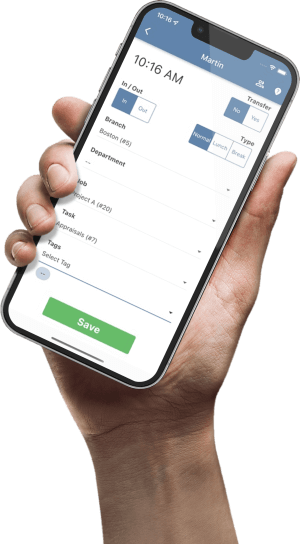
Utah Payroll Tax: A Quick Guide for Small Business
Article Index
- Executive Summary
- Utah State Income Tax Withholding for 2025
- Utah State Unemployment Insurance (SUI) in 2025
- Corporate Income Tax: Considerations for Payroll
- Essential Employer Compliance: Filing, Payment, and Reporting
- Additional Payroll-Related Tax Provisions
- Future Payroll Tax Outlook for Utah
- Historical Context of Utah Payroll Taxes
- Key Takeaways and Recommendations

Executive Summary: Navigating Utah's Payroll Tax Landscape in 2025 and Beyond
The payroll tax environment in Utah will see notable adjustments in 2025, primarily driven by legislative actions aimed at providing tax relief and targeted incentives. Key among these is a reduction in the state personal and corporate income tax rate to 4.50%. This change necessitates revised withholding practices for employers. Concurrently, the State Unemployment Insurance (SUI) taxable wage base will increase to $48,900 for 2025, with employer SUI contribution rates ranging from 0.20% to 7.20%. A significant new provision is the introduction of an employer tax credit for qualified childcare expenditures, effective from January 1, 2025.
Employers must ensure timely compliance with the updated income tax withholding formulas, which become effective for payroll periods starting on or after June 1, 2025. Looking beyond 2025, legislative trends suggest continued incremental adjustments to tax rates and specific provisions, such as the modified apportionment rules for financial institutions beginning in 2026. This report provides a detailed examination of these elements to assist Utah employers in navigating their payroll tax obligations effectively. The consistent legislative efforts to lower tax rates, coupled with specific incentives, indicate a strategy to foster a favorable economic climate in Utah. This approach requires businesses to remain informed and adaptable to evolving tax parameters.
Utah State Income Tax Withholding for 2025
The 2025 Income Tax Rate Reduction (H.B. 106)
A central development for Utah employers in 2025 is the reduction of the state's personal income tax rate. On March 26, 2025, Governor Spencer Cox signed H.B. 106 into law, which lowered both the personal and corporate income tax rates from 4.55% to 4.50%. This change is effective retroactively to January 1, 2025. Utah employs a flat tax system, meaning this 4.50% rate applies uniformly across all income levels.
This legislative action is part of a continuing trend in Utah, where lawmakers have pursued incremental reductions in income tax rates annually since 2022. The retroactive application of the tax cut to January 1, 2025, while the corresponding adjustments to withholding tables only take effect from June 1, 2025, has a particular consequence for employees. For the initial five months of 2025, employers will have withheld income tax at the previous, higher rate of 4.55%. This period of higher withholding will likely result in employees receiving larger tax refunds or owing less tax when they file their 2025 state income tax returns. Employers may find it beneficial to communicate this nuance to their workforce to help manage expectations.
Understanding the Revised Withholding Formula (Publication 14)
In response to the tax rate change, the Utah State Tax Commission has updated its official guidance document, Publication 14, "Withholding Tax Guide". This publication contains the revised withholding formula and tax tables reflecting the new 4.50% rate. Crucially for employers, the use of these updated formulas is mandatory for all payroll periods that begin on or after June 1, 2025. Employers are required to calculate the amount of state income tax to withhold based on each employee's completed federal Form W-4 and these new Utah-specific tables.
The mid-year implementation date demands prompt action. Any delay in adopting the revised tables could lead to continued incorrect over-withholding from employees' paychecks. Ensuring payroll systems are updated in a timely manner is essential for compliance.
Employer Responsibilities and Best Practices
Employers in Utah must withhold Utah income tax from wages paid to any employee for work performed within the state. This obligation also extends to Utah residents working outside the state, though a credit may be available for taxes paid to other states. The amount to withhold is determined using the employee's federal Form W-4 and the official Utah withholding tables. Although Utah uses the federal W-4, the state's flat tax simplifies the calculation compared to states with more complex tax systems. Nevertheless, employers are responsible for applying the Utah-specific tables correctly. It is advisable to proactively communicate these changes to employees to prevent confusion about their net pay.

| Year (Effective Dates) | Individual Income Tax Rate |
|---|---|
| Jan 1, 2018 – Dec 31, 2021 | 4.95% |
| Jan 1, 2022 – Dec 31, 2022 | 4.85% |
| Jan 1, 2023 – Dec 31, 2023 | 4.65% |
| Jan 1, 2024 – Dec 31, 2024 | 4.55% |
| Jan 1, 2025 – onwards | 4.50% |
Utah State Unemployment Insurance (SUI) in 2025
Key SUI Metrics for 2025: Taxable Wage Base and Rate Ranges
For 2025, the SUI taxable wage base has been set at $48,900 per employee. This means employers will pay SUI taxes on the first $48,900 of wages paid to each employee during the year. The SUI tax rates for employers will range from a minimum of 0.20% to a maximum of 7.20%. Employees do not contribute to SUI taxes, and employers are not permitted to make voluntary contributions to lower their assigned rates. The increase in the SUI wage base from previous years means SUI tax will be calculated on a larger portion of each employee's earnings, increasing payroll expenses.
How SUI Rates Are Determined for Employers
New employers are assigned a rate based on the industry average (NAICS code). An exception exists for new out-of-state contractors, who are typically assigned the maximum rate of 7.2%. For established employers, rates are calculated annually using the formula: (Benefit Ratio × Reserve Factor) + Social Cost. For 2025, the Reserve Factor is 1.10, and the Social Cost is 0.2%. A delinquency surcharge of 1.0% can be added if the employer has unpaid SUI contributions from the prior fiscal year. More information on rate calculation can be found at the Utah Department of Workforce Services.
Managing SUI Contributions Effectively
Effective management hinges on diligent compliance and proactive workforce management. Ensuring timely payment of SUI taxes is paramount to avoid the 1.0% delinquency surcharge. Since an employer's experience rating is a primary determinant of their rate, strategies that promote workforce stability, minimize turnover, and carefully manage separations can be beneficial. Because Utah does not permit voluntary contributions to "buy down" rates, long-term HR strategies are the most effective way to control SUI costs.
| SUI Parameter | 2025 Figure |
|---|---|
| Taxable Wage Base (per employee) | $48,900 |
| Experienced Employer Rate Range | 0.20% − 7.20% |
| New Out-of-State Contractor Rate | 7.2% (maximum rate) |
| Reserve Factor | 1.10 |
| Social Cost | 0.2% |
| Delinquency Surcharge | 1.0% (additional) |
| Employee SUI Contribution | None |
| Voluntary Contributions Allowed | No |
Corporate Income Tax: Considerations for Payroll
2025 Corporate Tax Rate and Its Implications
The legislative changes in H.B. 106 also reduced Utah's corporate income tax rate. For tax years beginning on or after January 1, 2025, the rate was lowered from 4.55% to 4.5%, aligning it with the personal income tax rate. While this alignment simplifies the overall tax structure, it doesn't change the fundamental tax treatment of different business entities. The issue of "double taxation" for C-corporations persists, where profits are taxed first at the corporate level and then again at the individual level when distributed as dividends.
Impact on Business Structure (C-Corps vs. Pass-Through Entities)
The choice of business entity remains critical. Pass-through entities—such as S-corps, partnerships, and most LLCs—do not pay tax at the entity level. Instead, profits "pass through" to the owners and are taxed at the individual rate of 4.50%. In contrast, C-corporations pay the 4.5% corporate tax, and shareholders then pay personal income tax on dividends. Even with lower rates, this structural difference remains substantial. For businesses planning to distribute significant profits, a pass-through structure generally remains more tax-efficient in Utah.
Essential Employer Compliance: Filing, Payment, and Reporting
Navigating Key Forms and Deadlines
Employers generally file Form TC-941, Utah Withholding Return, to report withheld income taxes. Filing frequency depends on the amount withheld:
- Monthly: For employers withholding $1,000 or more per month.
- Quarterly: For employers withholding less than $1,000 per month.
- Annually: For household employers or those filing federal Form 944.
A critical deadline for all employers is January 31. By this date, employers must provide W-2s to employees and electronically file their annual reconciliation (Form TC-941E) with the Tax Commission. The state reviews accounts annually and will notify businesses of any change in their filing frequency.
Leveraging the Taxpayer Access Point (TAP) for Efficiency
Electronic filing is mandatory for employers with more than 25 employees. The primary platform is the Utah Taxpayer Access Point (TAP), an online system for filing and paying taxes. TAP supports various electronic payment methods, including EFT and credit cards (which may incur a fee). This digital approach reduces paperwork and minimizes errors, but requires businesses to be comfortable with online systems.
Year-End Reporting and Reconciliation Requirements
A crucial year-end duty is filing the annual reconciliation, Form TC-941E, via TAP by January 31. This form reconciles taxes reported and paid throughout the year with the totals on employee W-2s. An annual reconciliation must be filed for every year an employer's withholding account is active, even if there was no payroll or withholding. Failure to file a "zero" reconciliation can lead to non-filer notices, making it important to formally close tax accounts that are no longer needed.
| Form/Report | Frequency | General Due Date(s) |
|---|---|---|
| Form W-2 (to employees) | Annual | January 31 |
| Form TC-941E (Annual Reconciliation) | Annual | January 31 (Electronic) |
| Form TC-941PC/TC-941E (Quarterly Filers) | Quarterly | Apr 30, Jul 31, Oct 31, Jan 31 |
| Form TC-941PC (Monthly Filers) | Monthly | Last day of following month |
Additional Payroll-Related Tax Provisions
New: Employer Tax Credits for Childcare Expenditures
Effective January 1, 2025, a significant new development is the creation of nonrefundable income tax credits for qualified childcare expenditures. This initiative aims to incentivize employer participation in enhancing childcare access and affordability. The credits are:
- A credit equal to 10% of an employer's qualified childcare expenditures.
- A credit equal to 20% of an employer's expenditures to acquire, construct, or expand property for a qualified childcare facility.
These credits can help offset costs associated with a valuable employee benefit that can improve recruitment and retention.
Absence of State-Mandated Disability and Paid Leave Programs
Unlike a growing number of states, Utah currently does not mandate Short-Term Disability (SDI), Paid Sick Leave (PSL), or Paid Family and Medical Leave (PFML) programs. This simplifies payroll administration, as employers do not need to manage withholdings for these state programs. However, employers must still comply with federal laws like FMLA and should consider offering such benefits privately to remain competitive.
Other Relevant Factors (Minimum Wage, Self-Employment Tax)
Utah's state minimum wage is $7.25 per hour, the same as the federal rate. For self-employed individuals, in addition to the 4.50% state income tax, they are also subject to federal self-employment taxes for Social Security (12.4% on earnings up to the wage base) and Medicare (2.9% on all earnings), for which they are responsible for the entire amount.
Future Payroll Tax Outlook for Utah
Utah's tax policy is characterized by a consistent trend of incremental rate reductions. One specific change already enacted is S.B. 219, which, effective January 1, 2026, modifies the income apportionment formula for financial institutions. Such changes can indirectly affect employment levels in that sector. Given the state's pattern of annual adjustments and its mandate to review the impact of federal tax law changes, businesses should expect an evolving landscape and plan for flexibility in their financial models.
Historical Context of Utah Payroll Taxes
The State Unemployment Insurance (SUI) system has also evolved. The taxable wage base has seen a consistent upward trend, increasing employer costs even when rates fluctuate. This progression underscores a deliberate state policy to ensure the health of the unemployment fund while also aiming to reduce direct income tax burdens.
| Year | SUI Taxable Wage Base |
|---|---|
| 2021 | $38,900 |
| 2023 | $44,800 |
| 2025 | $48,900 |
Key Takeaways and Strategic Recommendations for Utah Employers
To navigate Utah's dynamic payroll tax landscape in 2025, employers should focus on these key actions:
- Immediate Action: Update payroll systems for the new 4.50% income tax withholding rate by the June 1, 2025 deadline.
- Budgeting: Factor the higher SUI taxable wage base of $48,900 into 2025 cost projections.
- Tax Planning: Investigate eligibility for the new employer tax credit for childcare and review your business entity structure for tax efficiency.
- Compliance: Use the TAP portal for electronic filing and remember to file the annual reconciliation (Form TC-941E) even with zero payroll activity.
- Future Preparedness: Stay informed about legislative changes through official sources like the Utah State Tax Commission.
Proactive compliance, strategic planning, and a commitment to staying informed are essential for employers to successfully manage their obligations in Utah's evolving tax environment.
Simplify Your Utah Payroll
Feeling overwhelmed by the 2025 changes? Ensure accuracy and save time with our free, up-to-date payroll calculator.
Use the Utah Payroll Tax CalculatorDisclaimer: The content provided on this webpage is for informational purposes only and is not intended to be a substitute for professional advice. While we strive to ensure the accuracy and timeliness of the information presented here, the details may change over time or vary in different jurisdictions. Therefore, we do not guarantee the completeness, reliability, or absolute accuracy of this information. The information on this page should not be used as a basis for making legal, financial, or any other key decisions. We strongly advise consulting with a qualified professional or expert in the relevant field for specific advice, guidance, or services. By using this webpage, you acknowledge that the information is offered “as is” and that we are not liable for any errors, omissions, or inaccuracies in the content, nor for any actions taken based on the information provided. We shall not be held liable for any direct, indirect, incidental, consequential, or punitive damages arising out of your access to, use of, or reliance on any content on this page.
About The Author

Roger Wood
With a Baccalaureate of Science and advanced studies in business, Roger has successfully managed businesses across five continents. His extensive global experience and strategic insights contribute significantly to the success of TimeTrex. His expertise and dedication ensure we deliver top-notch solutions to our clients around the world.
Time To Clock-In
Start your 30-day free trial!
Experience the Ultimate Workforce Solution and Revolutionize Your Business Today
- Eliminate Errors
- Simple & Easy To Use
- Real-time Reporting

Saving businesses time and money through better workforce management since 2003.
Copyright © 2025 TimeTrex. All Rights Reserved.
